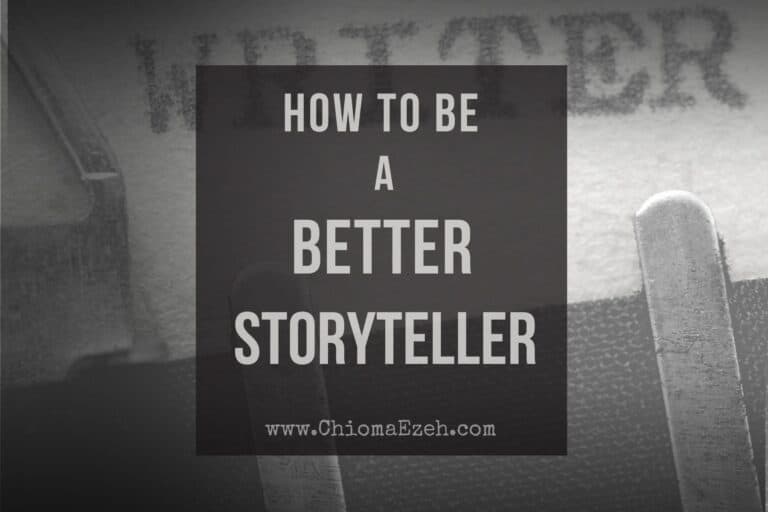How to Write A Story In 9 Steps: Fast And Easy!
Learning how to write a story takes time, commitment, and practice – lots of it. You won’t start off writing great stuff; you’ll likely think what you write is good when it’s really not. However, if you persist and keep working at it, your writing will steadily improve with time.
It’s akin to the famous quote by Philip Roth: “The road to hell is paved with works-in-progress”. But this can also mean the road is paved with “words-in-progress”, with authors never getting the chance to finish writing their stories. Pun intended 🙂
This article is designed to break down the often daunting task of writing a story into much more manageable steps.
👉 To learn more and see this overview of story and storytelling

Let’s Talk
Are you a writer aspiring to pen a masterpiece that never fails to captivate? Look no further. Reach out to us and uncover how we can help you to take your writing to unprecedented heights!

Why write a story?
So, why should you write a story? I mean, why not just read or watch films?
Well, writing a story gives you the power to create something. To take ideas and turn them into something real – a world of your own, with characters, settings, and events. It allows you to tap into your creativity and craft an unforgettable tale that others can enjoy.
And whether we like it or not, we all have stories to tell. Everyone has had experiences in their life that are unique. There are stories within us all, waiting to be unleashed. And learning to tell your own story can make you a stronger, more creative writer.
👉 How can you become a better storyteller? Learn more in our storytelling guide
How To Write A Story
#1. Create your story idea.
Before you write a story, come up with an interesting idea. It doesn’t have to be complicated but it should be something that will make your readers want to find out what happens. You can get ideas from things you have seen in real life or even dreams. You can also get inspiration from books and movies you’ve watched or read before.
For example, if you’re writing a story about a young girl who discovers she has special powers, draw inspiration from other stories with similar themes. Think of what makes your protagonist different and how this affects the plot.
👉If you have no idea for your next story, see our story ideas for every genre!
#2. Develop characters.
Your story needs characters that are interesting and make people care about them. Spend time on each character. Make up their background, like where they come from and what happened in the past. Think about how they act, why they do things, what their dreams are, any mistakes they might make, and how they get along with other characters in the story.
Don’t forget to make sure your characters are multi-dimensional. That means they aren’t just good or bad. They have both positive and negative traits, motivations, and flaws.
When you take the time to creatively develop your characters, your story will come to life and be much more exciting.
#3. Choose a point of view for your story.
When you write a story, you have to decide how it will be told. This is called “point of view”. Point of view means the way that the story looks at things. You can tell the story from your own eyes (first person), or from someone else’s eyes (third person).
You can also let everyone know everything that is going on in the story (omniscient). Or you can use more than one point of view in your story. All these choices will change how readers connect with what is happening in your book.
#4. Create an immersive setting.
Consider this line from a scene in the movie Star Wars:
“A long time ago in a galaxy far, far away…”
This simple phrase instantly transports its audience to a completely different world.
When drafting your story, try to create an immersive setting that draws readers into the unique world of your story. Detail the geography, climate, and culture of your story world to bring it to life. Incorporate strong sensory language such as smell, sounds, and tastes to enhance the immersive experience for your readers.
Creating a good setting is important because it helps readers feel like they are part of the story.
👉To learn more, see our comprehensive guide on setting of a story
#5. Employ conflict and stakes.
Conflict is like two sides fighting against each other, which makes the story interesting. Without it, the story would be a boring romp with no tension or excitement. Stakes help readers understand why they should care about what happens in the story.
One of the most popular novels that employ conflict and stakes is J.K. Rowling’s Harry Potter series.
In the Wizarding World, Lord Voldemort is at odds with Harry Potter, and the stakes are incredibly high: either Voldemort will succeed in his goal to take over the world or Harry will be able to thwart his plans.
When you’re setting up the conflict and stakes in your story, try to think of what would make it difficult for your protagonist to achieve their goal. Establishing conflict and stakes early on helps to keep your reader engaged.
#6. Choose your story structure.
You need to pick the right structure for any story you intend to write. There are many types of structures, like 3-Act Structure, Hero’s Journey, Save the Cat, etc. Each structure works best for different types of stories.
For example, if you are writing a story with a main protagonist overcoming obstacles, the Hero’s Journey structure might be the best fit. But if your story is an adventure full of twists and turns, the Save The Cat structure may be more suitable.
Think about the kind of story you are writing and pick the right structure for it.
👉For a deeper dive into this framework, see our comprehensive guide on story structure
#7. Create an outline.
Once you have everything you need for your story, it’s time to make a plan. You can start making a plan of your story using a chosen structure. This is called a story outline. The outlining process helps you keep track of plot points and make sure your story stays on track.
Plotters use outlines to keep track of their story and make sure the plot moves forward. Pantsers don’t use outlines, but they often get stuck and experience writer’s block.
To make an outline, think about what will happen in each act, scene, or chapter and determine how it all fits together. Decide who your characters are and what their motivations are. Establish the time period in which your story takes place and think about the plot points that will drive your story forward.
👉For more information on creating an effective outline, go over to our guide to outlining.
#8. Start Writing Your first draft.
It’s time to start writing the first draft. But before then, you’d have to do some form of prewriting. Don’t worry about mistakes or typos—just focus on getting your story down on paper. It doesn’t have to be perfect, but it should flow from one scene to the next.
If you find that you’re easily distracted, find a quiet spot to write or set a timer for yourself. You could even use distraction-free writing tools to help you power through your first draft. You may find it easier to start off with an outline, a mind map, character sketches, or a storyboard. Or if you’re a pantser or just feeling brave, just dive in and start writing 🙂
If you find yourself stuck at certain points, don’t hesitate to try something different – like walking away from the project for a short while and coming back with fresh eyes.
👉For more information on how to write your first draft, check out our author’s guide to writing the first draft.
#9. Revise and Edit Your Work.
After you have completed the writing of your first draft, it is time for the revision stage. This is where you’ll be able to go back and make any changes, corrections, or additions that you deem necessary.
When editing, check for things like spelling and grammar errors, inconsistencies, or typos. If you cannot do this manually, you can employ the help of grammar checker tools that will spot grammar mistakes, passive voice misuse, and writing tone.
After editing, have someone else (preferably a professional) read it and give you feedback. This could be a teacher, mentor, experienced beta reader, or someone with experience in the publishing industry. Then apply any changes they suggest.
👉For more information, see our guide on the Writing Process— where we discussed in detail, how to write, revise and edit your work.
Once you have completed the editing process, your story is ready to be shared with the world! Congratulations on completing your story 🙂
The above are the 9 main steps to how to write a story. The next steps below, however, further explores how you can publish and then promote your story.
#10. Publish Your Story.
Once you’ve completed the revision process it is time for the final step – publishing your story. Depending on how you want to share it, you could self-publish your book, submit it to an agent or publisher, post it on social media platforms, or even enter a writing contest.
Whichever route you choose, make sure that you take the time to do any additional formatting necessary for the publication platform. Ideally, your story should look and read its best.
I often recommend self-publishing your book on Amazon – as it’s easy to do and there is a large potential readership.
#11. Promote Your Story.
Once you have published your story, it is time to get the word out! Promote your book. Create an effective marketing plan that will target potential readers and help them find your work.
You can do this by setting up a website for your book, creating social media accounts, or even launching a book blog. Another way to promote your book is to attend literary events such as book festivals, conventions, workshops, or signings. You can also offer freebies to readers, as this is a great way to get them excited about your story.
FAQs on How To Write A Story
Is An Anecdote The Same As A Story?
An anecdote is not the same as a story. An anecdote is a brief, often humorous account of an event or incident. A story, on the other hand, is usually longer and contains characters and a plot that has elements such as rising action and resolution.
Is A Narrative The Same As A Story?
A narrative is not the same as a story. A narrative is a form of communication that relates an event or series of events in chronological order. It is often used to convey information about past events and can include elements such as characters, setting, plot, and conflict. A story, on the other hand, follows more of a structure and has its own structure.
Is There Any Difference Between Plot And Story?
There is a difference between plot and story. Plot refers to the sequence of events in a narrative or story. It is what drives the narrative forward and provides key information about characters, settings, and conflict. A story, on the other hand, encompasses a larger idea or concept that ties all of these elements together.
Final Words on How To Write A Story
No matter which type of story you choose to write, you need to have a strong understanding of the basic elements and structure of storytelling. By knowing how to write a story you want to tell, you can craft a powerful and engaging narrative that will capture your readers’ attention and keep them coming back for more.

![How to Overcome Writer’s Block: 7+ Tips That Work [Exercises]](https://chiomaezeh.com/wp-content/uploads/2023/01/How-to-overcome-writers-block-768x512.jpg)

![What Are Action Beats in Writing? [Definition + Examples]](https://chiomaezeh.com/wp-content/uploads/2023/04/what-is-an-action-beat-768x512.jpg)


![Outlining In Writing: 6 Easy Steps For Success [With Formats]](https://chiomaezeh.com/wp-content/uploads/2023/01/What-is-outlining-in-writing-process-768x512.jpg)